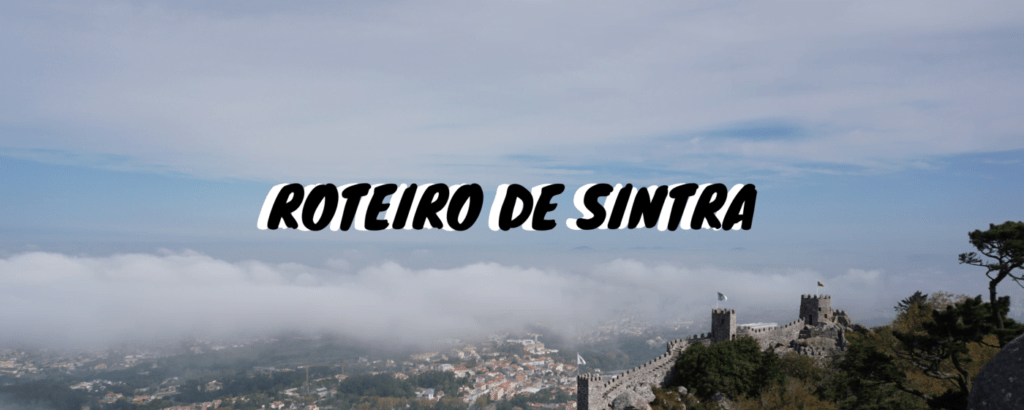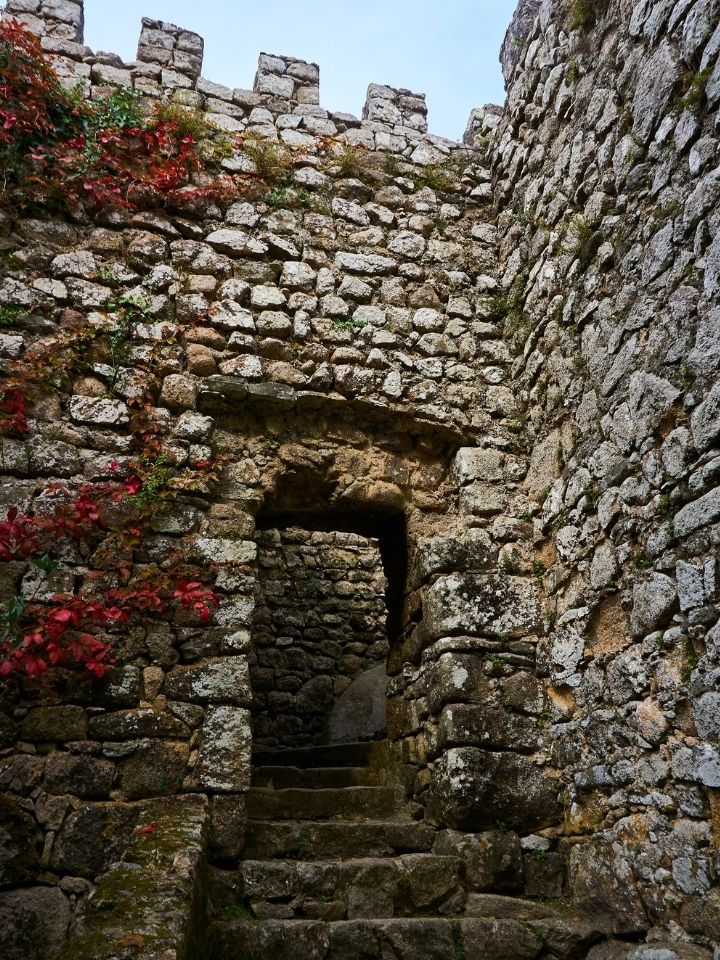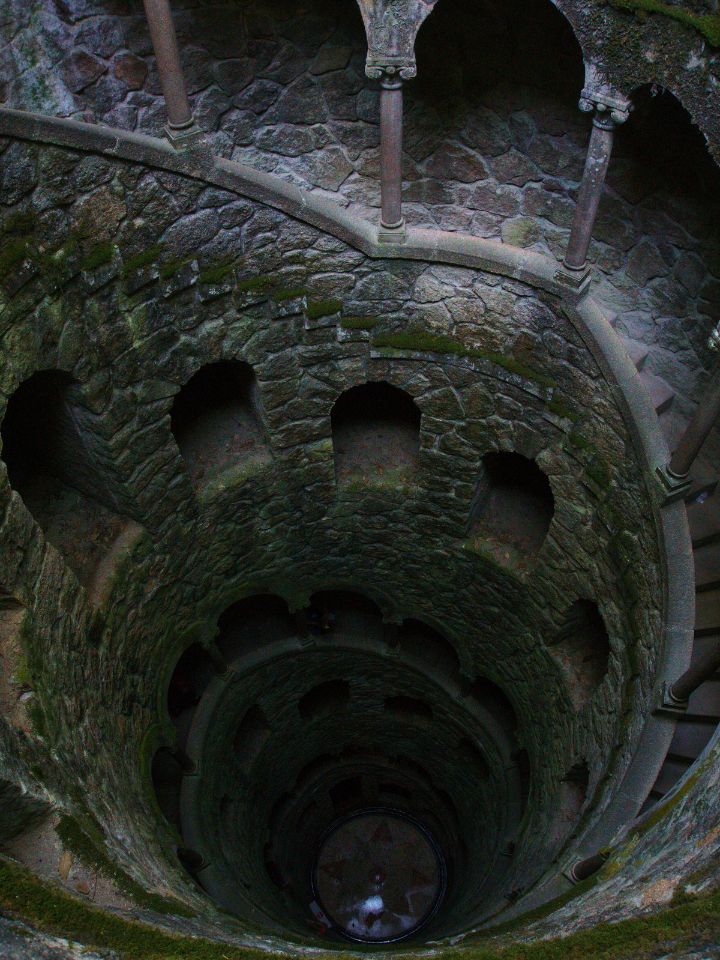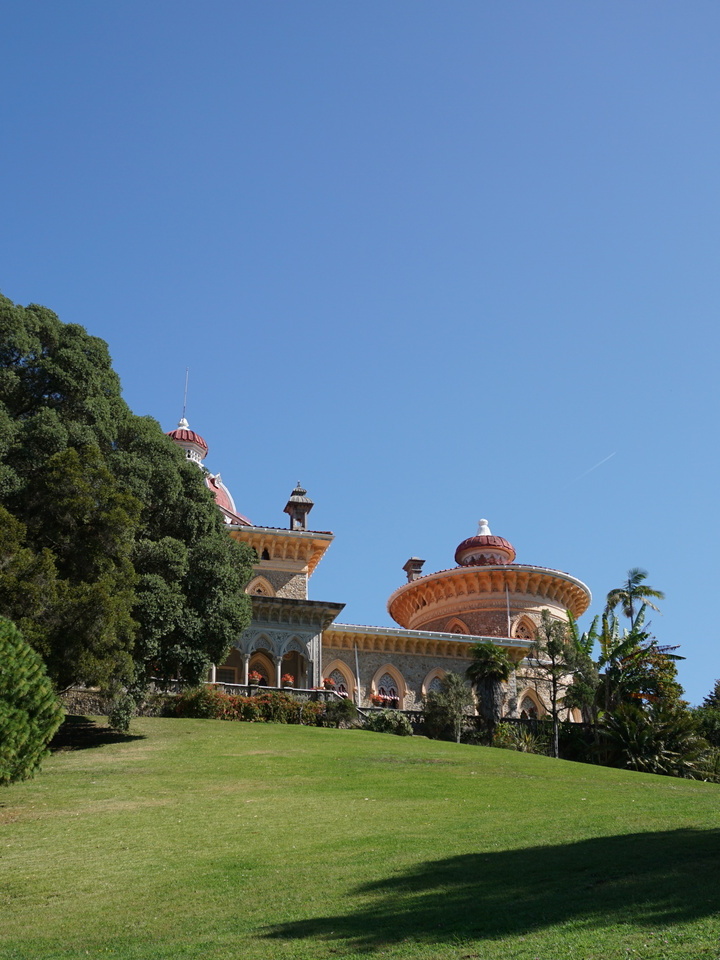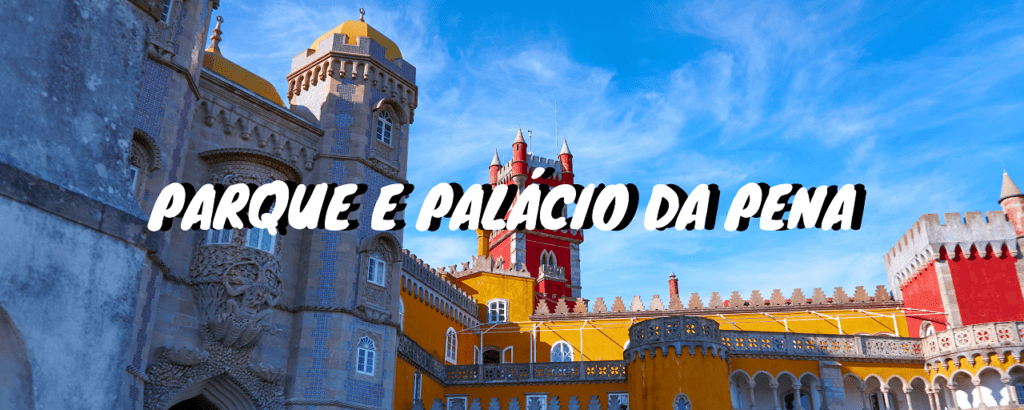
Do alto da serra de Sintra, olha-nos o colorido e imponente Palácio da Pena (de nome completo Pena National Park). As suas cores vivida e o seu estilo revivalista convidam-nos ao longe a visitá-lo. E assim fomos!
In the place we now know as Pena Palace, a chapel began to exist in the 12th century. Later, by order of the king, the Royal Monastery of Nossa Senhora da Pena was built, which later came to be very destroyed in the Lisbon Earthquake of 1755.
Terminou as suas funções como mosteiro apenas cerca de cem anos depois, quando as ordens religiosas foram extintas. É a D. Fernando II que se deve a criação do atual Parque e Palácio Nacional da Pena, havendo diversas referências à sua vivência no interior do palácio.
Subsequently, a second phase of construction takes place, under the command of King D. Carlos I. It has been classified as a National Monument since 1910 and, since 1995, UNESCO Heritage.
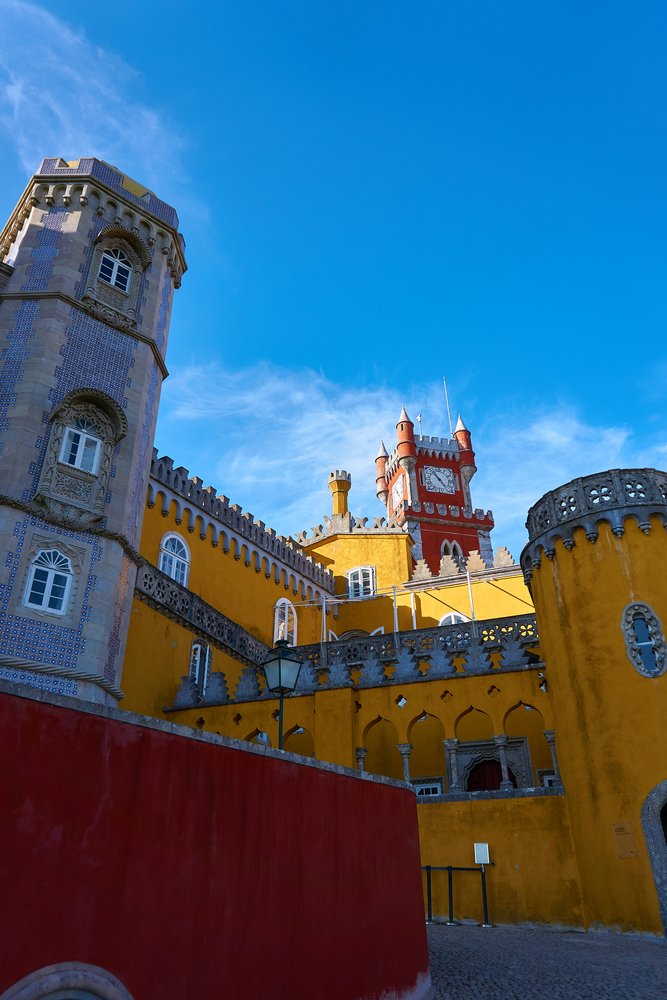
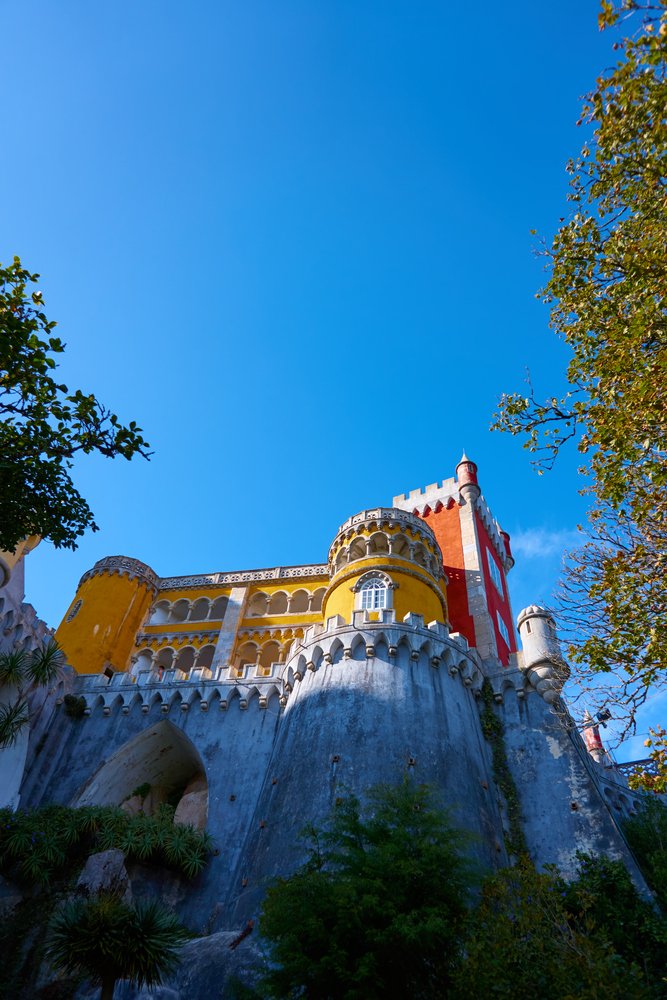
Quer pelo Palácio imponente, quer pelos seus 85 hectares de terreno envolvente, o Palácio da Pena é considerado paragem obrigatória para quem visita Sintra.
The entrace cost de 14€ / adulto (13.3€, se comprado online), sendo que atualmente (2021) é necessário reservar hora de entrada.
So, on our last day in Sintra, we decided to venture out to discover one of the most well-known monuments in Portugal. However, this process was not as easy as we expected.
The first aspect noted was the difficult access. It is no longer possible to drive our car to the entrance to the Park and this is not explicit in advance. Unless we surrender to the typical Tuk Tuk’s in the city, or other authorized vehicles, we are required to climb uphill, which we consider difficult. This can be done either by the main mountain road (Pena Road - Estrada da Pena), or by access to Moorish Castle (Castelo dos Mouros), where the direction and distance of the route is indicated. We chose the latter and it was about 3km with a lot of uphill and many stairs.
O Palácio da Pena tem o custo de 14€ / adulto (2021), sendo possível comprar o bilhete apenas para o parque
When passing the entrance, we are presented with several signs indicating the best points of attraction of the Park. We were immediately aware of the immensity of the area that surrounds it, for the distances indicated and we quickly understood that it would not be possible to visit the entire park on foot.
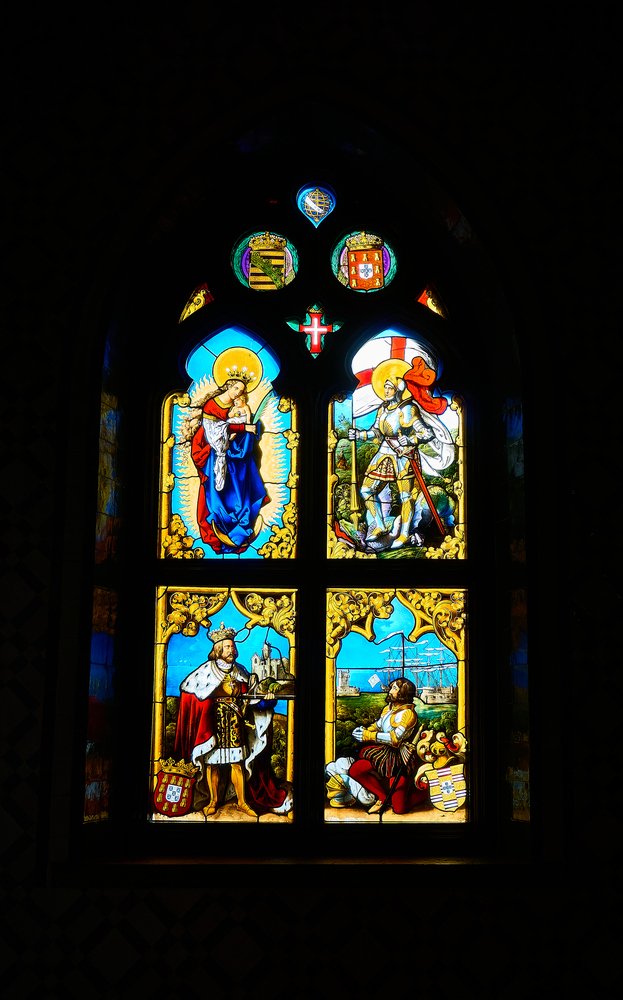
There is an internal bus that allows you to visit the different points of the park, but we did not inquire about the prices because it was not in our interest.
A verdade é que dada a hora tardia a que chegámos, e culpando aqui o não contemplado difícil acesso, optamos por visitar apenas o Palácio.
We started the climb on foot, already inside the Park. The palace is hiding among trees, but at the end of 300m, behold, it immediately appears and impresses.
We started to be led through the grotesque walls and immersed in the small streets of that fairy tale. The exterior of the palace is free to explore, even though it only has the “Park” ticket. It is the ideal place to take your photos!
It is also here that, almost hidden by the immense doors of the palace, we find an old chapel, with a magnificent stained glass window.
Após conhecermos todo o exterior do Palácio da Pena decidimos ir então fazer a visita ao seu interior. É necessário ter em atenção que o horário de encerramento do Palácio é diferente do do Parque, e pelo que nos foi dito, diferente do que tínhamos visto online, então recomendamos perguntarem na bilheteira.
The visit to the Palace is extremely well organized, operating on a circuit.
Tenham em atenção que o horário de encerramento do palácio é diferente do horário do parque
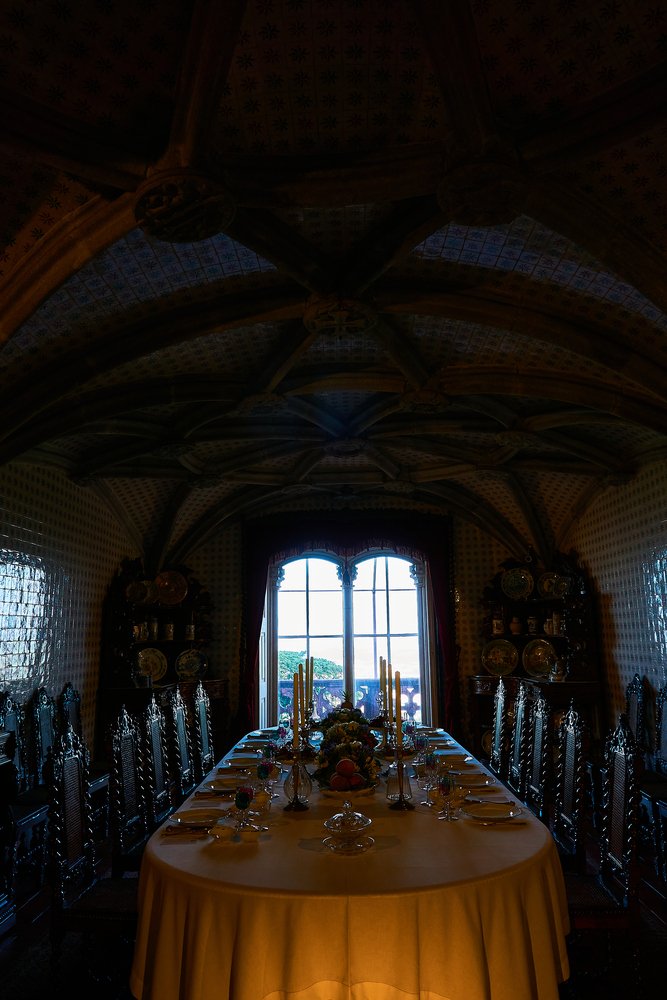
During the visit, the existence of an Old Palace and a New Palace is mentioned, the latter ordered to be built by D. Fernando II, with a clear architectural difference between the two parts of the palace.
In the interior of the Pena National Palace, several rooms stand out, either for the luxury found there, or for the diversity. Some more notable examples are the Deer Room (Sala dos Veados), surrounded by deer heads all around its swirling ceiling, the Noble Hall (Salão Nobre), where there is a great mix of styles and the Manueline Cloister, an open area in the center of the palace and reminiscent of fairy tales.
Já no Parque do Palácio, que infelizmente não tivemos hipóteses de visitar, encontram-se várias construções a visitar. As principais são o Chalé da Condessa de Edla (a mais de um km do Palácio), as Cavalariças, a Estátua do Guerreiro, a Cruz Alta (sendo ambas possíveis de ver ao longe entre as árvores) e muitas outras construções aparentemente incríveis.
No entanto, é realmente necessário ou visitar o Parque e o Palácio durante um dia inteiro, e prontos a caminhar bastante, uma vez que está tudo espalhado, muitas coisas a mais de um kilómetro do palácio, e em direções diferentes. Podem também utilizar os autocarros internos, o que nós já não tivemos hipótese de fazer por causa da hora a que fomos. Para terem uma melhor noção do tamanho do parque podem consultar o map here.
A final highlight has to be the landscape. From the Palace, in addition to seeing Sintra and all its surroundings to the sea, it is also possible to see the Moorish Castle (Castelo dos Mouros), a defense construction really close.
A visita ao Parque e Palácio da Pena, apesar de ser mais cara que os outros monumentos em Sintra, vale completamente a pena. Tenha, apenas em atenção que os acessos e a circulação lá dentro é um problema, então tenham essa informação em consideração quando visitarem a mítica e fantasiosa Serra de Sintra.
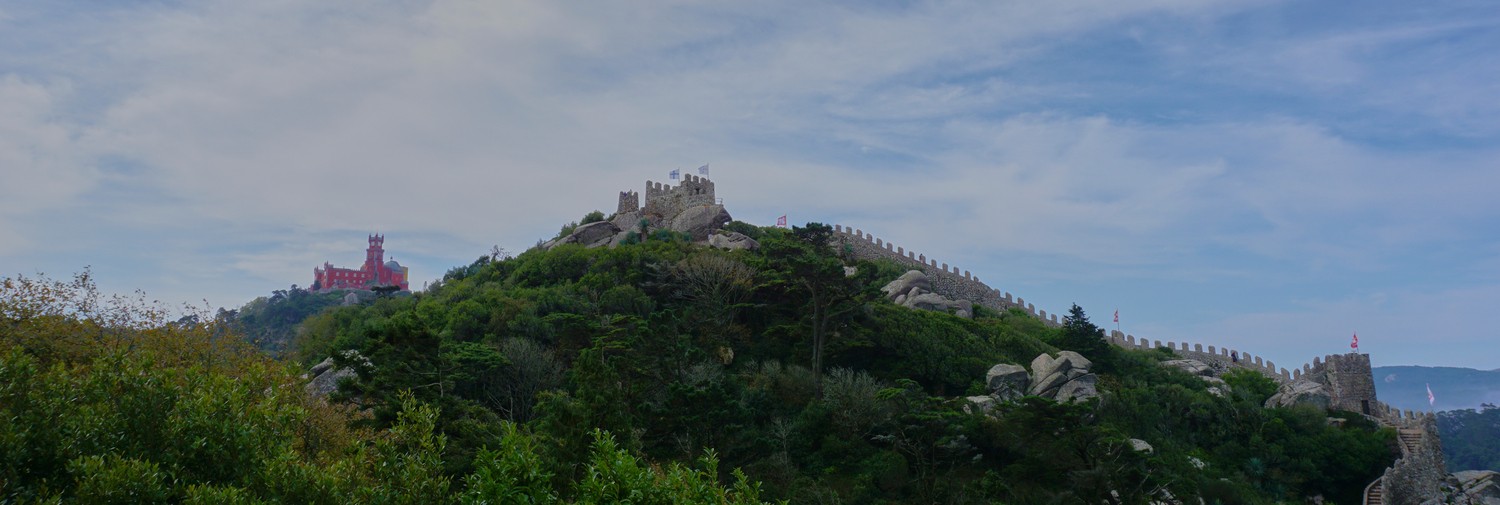
more to see
Other destinations not to be missed in Sintra
